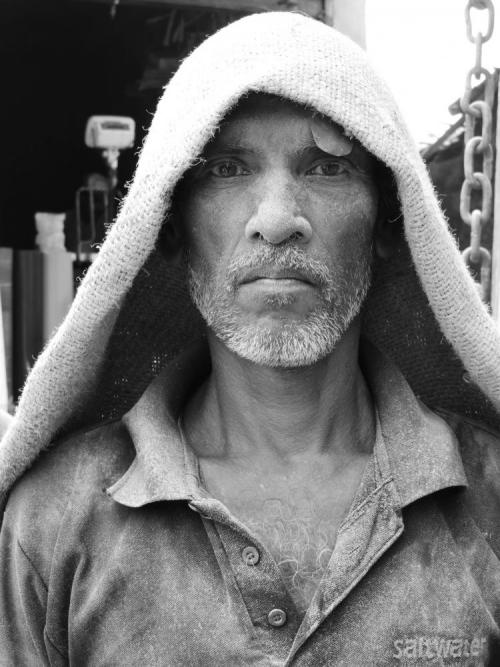
Shanti (name changed) was lying in a Hospital bed in the emergency ward at Phul Kumari Mahato Memorial Hospital (PKMMH) in Karjanha, Siraha; a woman around 60 years, although she and her sister/daughter-in-law had little idea. The woman had abrasions on her nose, as she had been beaten up, as well as a dislocated right shoulder. This was the result of Shanti being taken to a “witch-doctor” by her family because she had been speaking “nonsense”.
Three years ago Shanti’s 30 year old son, who had gone to Qatar to work, had died in a traffic accident, leaving behind a very young wife and three daughters. Shanti’s sister-in-law told me that she hadn’t been right since. Shanti’s daughter-in-law Pramila (name changed) who could have been no more than 25 years, cried as she thought about her husband and the life that could have been. She was suffering from an enlarged neck and in need of a thyroid test.
I asked the sister-in-law what she was thinking in bringing Shanti to a witch doctor. She said that she wanted to try this first as Shanti just hasn’t been right since her son died. After this she was going to take Shanti to a mental health hospital in India.
I contrast this with my personal dealings with mental health issues. I’ve been to therapists in the US and taken medication for depression, mostly due to the fact that I stuffed my emotions inside for too many years. After numerous years of hard work I’ve come out on the other side; but how do those without understanding or access ever get there?
In the US mental health issues are taken seriously. According to the website Depression Perception “Mental disorders are common in the United States and Internationally. An estimated 22.1% of Americans ages 18 and older (about 1 in 5 adults) suffer from a diagnosable mental disorder in a given year.” If people need help they can get it.
What I’ve observed from living overseas for the past five plus years is that those suffering from mental health issues, and I’ve seen this everywhere, from those poor souls living on the streets in India to those brought to witch doctors, have little understanding or access regarding these issues. The World Health Organization estimates that about 121 million people worldwide have some form of depression, although less than 25 percent have access to effective treatment. However, I would venture to guess that this figure is exponentially higher.
Suicide a marker of mental health is unfortunately very prevalent throughout the world. I’ve observed numerous people at PKMMH who have drunk insecticide in an attempt to end their lives. Every 40 seconds someone in the world takes their own life, a global tally of more than 800,000 suicides a year, according to a landmark United Nations report on the subject. Unfortunately Nepal is in the top 10 at number eight.
Living in a rural area there are no therapists and little medication for those suffering from mental illness. People tend to self medicate by drinking raksi. It is however possible to make attempts to at minimum bring more awareness to the scourge of mental illness.
Working with government health posts, community medical workers, VDC’s, community groups, etc. a concerted effort must be made at raising public awareness about mental health issues and potential treatments. It should never be acceptable for a person to be taken to a “witch doctor” to be beaten in order to exorcise their “demons”.
Instead hospitals and other institutions should have a mental health counsellor on staff, especially for those who try to commit suicide. If a person is released from a medical institution without any kind of counselling, most likely they will eventually be successful in committing suicide.
We can change our perceptions and awareness about mental health but first we must come to a common understanding that exorcising one’s demons through violence is not the answer.










Add new comment